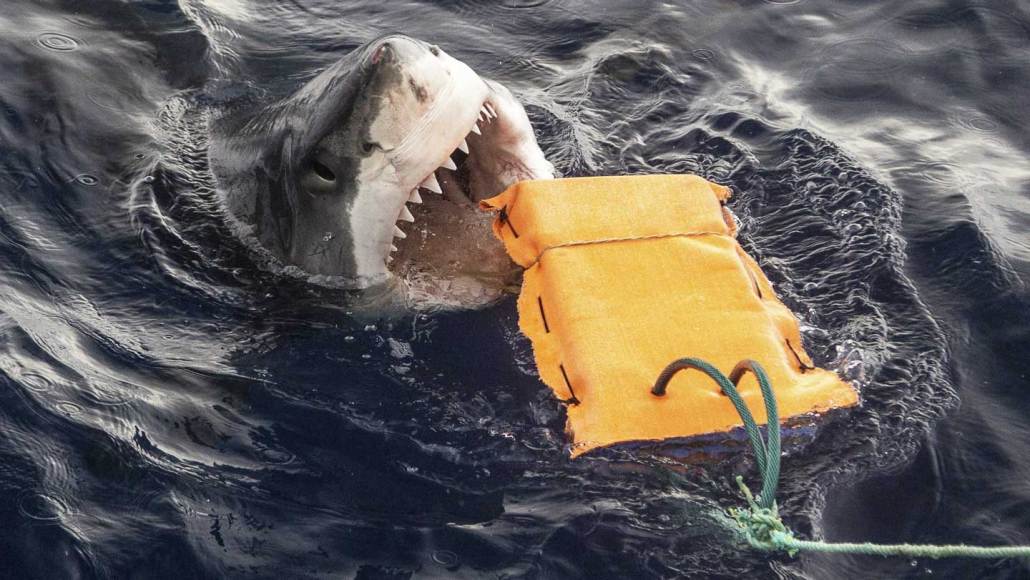New wetsuit designs offer a layer of protection against shark bites
Lightweight materials like Kevlar and nanofibers blunt the damage from white and tiger sharks

This white shark is chomping down on a new type of bite-resistant wetsuit material near Neptune Island Group Marine Park in South Australia.
Flinders University